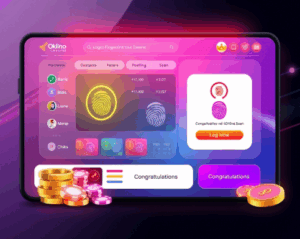In today’s hyperconnected world, setting healthy digital boundaries is more essential than ever. As smartphones, laptops, and social media dominate our daily lives, it’s increasingly difficult to manage screen time and maintain a digital life balance. Without clear boundaries, digital overload can lead to stress, sleep problems, reduced productivity, and strained relationships. Whether you work remotely, study online, or simply scroll through apps during your free time, developing mindful tech habits is the first step toward regaining control. Creating intentional limits around your digital consumption empowers you to use technology as a tool—not a trap—allowing space for better focus, mental clarity, and overall well-being. It’s time to reclaim your digital life with smarter habits and conscious choices.
The Importance of Setting Healthy Digital Boundaries
Technology brings countless benefits—instant communication, global connectivity, and endless learning opportunities. However, without limits, the same tools can lead to digital burnout, distraction, and anxiety. Establishing healthy digital boundaries is about creating a structure where technology enhances your life instead of overwhelming it.
1. Protects Your Mental Health
Excessive screen time is closely linked to anxiety, depression, and decreased attention span. Notifications, emails, and social media constantly demand attention, triggering stress responses. Setting boundaries like device-free hours or app limits helps reduce this cognitive overload, giving your mind the rest it needs to reset and refocus.
2. Improves Sleep Quality
The blue light that screens emit affects melatonin production, thereby disturbing your natural sleep cycle. By limiting screen time an hour before bed and keeping devices out of the bedroom, you foster better sleep hygiene. Healthier sleep means improved energy, memory, and mood throughout the day.
3. Strengthens Real-life Connections
Digital distractions often steal time and attention from face-to-face relationships. By setting screen-free zones—like during meals or family time—you prioritize meaningful conversations and deeper connections. These intentional habits build stronger relationships and create more fulfilling offline experiences.
4. Enhances Productivity and Focus
Constant screen interaction, especially through multitasking apps and platforms, reduces our ability to concentrate. Structuring your day with dedicated “offline” focus periods allows your brain to enter deep work states, making tasks more efficient and rewarding. Tools like time-blocking or the Pomodoro technique can be useful in setting these limits.
How to Manage Screen Time More Effectively
You don’t have to go on a digital detox to take back control—small, consistent steps can make a big difference in your daily life.
1. Monitor Your Digital Habits
Begin by recognizing the amount of time you spend on screens. Use built-in tools like Screen Time (iOS) or Digital Wellbeing (Android) to track app usage and set daily limits. Once you have visibility, you can identify time-wasters and eliminate them from your routine.
2. Define Tech-free Zones
Create clear boundaries around where you use your devices. For example:
- No phones at the dinner table
- While you work, keep your phone away from your reach.
- Avoid screen use in bed
These simple rules go a long way in creating physical and psychological distance from your devices.
3. Use Technology Intentionally
Before picking up your phone or opening your laptop, ask yourself: “What do I need to do?” Being intentional about your actions helps you avoid mindless scrolling or app hopping. Consider turning off non-essential notifications to reduce digital noise and maintain focus.
4. Schedule Screen Breaks
Utilize timers or applications that prompt you to take breaks. After every 25 to 30 minutes of work on the screen, take a 5-minute physical break—go outside, stretch, or give your eyes a rest. This aids in preventing digital fatigue and enhances overall energy levels.
5. Limit Social Media Use
Social media is designed to be addictive. Set daily limits, unfollow accounts that don’t serve your well-being, and consider taking regular breaks. Improving your mood and decreasing reliance on digital validation can result from substituting tech-free hobbies for some of that time.
Achieving a Balanced Digital Life
Establishing a digital life balance involves ensuring that your online activities are in harmony with your values, personal objectives, and mental well-being. It’s not about rejecting technology—it’s about redefining your relationship with it.
1. Set Digital Priorities
What role should technology play in your life? Do you want to use it more for learning, connection, or creation? Clarify your priorities so you can say “no” to distractions and “yes” to what truly matters.
2. Create a Daily Digital Routine
Just as you schedule work, meals, and exercise, you should schedule your digital usage. Allocate specific times for emails, social media, and entertainment. Then stick to those boundaries. Routines build discipline and prevent technology from leaking into every hour of your day.
3. Reclaim Time for Offline Activities
Use the time gained from reduced screen usage to explore offline joys—reading, journaling, exercising, spending time in nature, or reconnecting with loved ones. These activities not only boost mental and physical health but also enrich your life in ways technology can’t.
Conclusion
Establishing healthy digital boundaries isn’t about restriction—it’s about empowerment. By learning to manage screen time intentionally, you create space for mental clarity, stronger relationships, and deeper focus. In turn, you build a sustainable digital life balance that supports both productivity and peace of mind. Start with one small change today, and let it lead you toward a more balanced, intentional way of living in our digital world.
Ready to reclaim your time and energy? Start building your digital life balance today by setting healthy digital boundaries that work for you!






